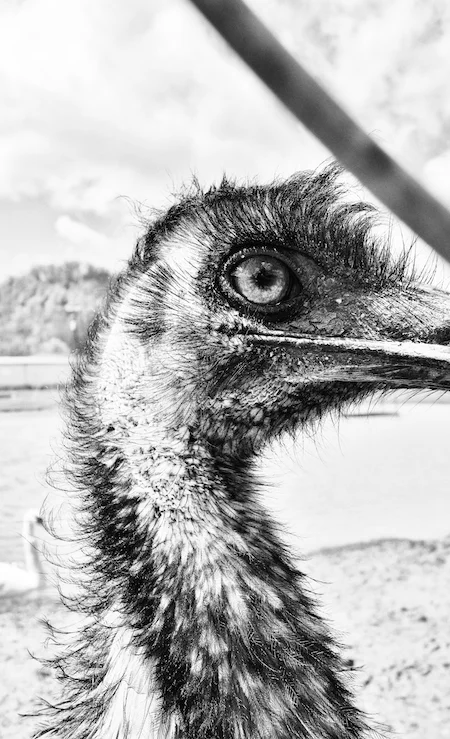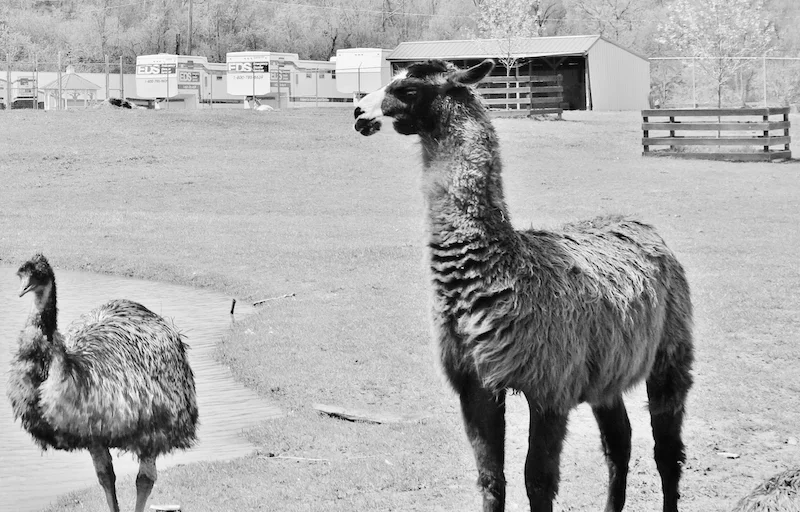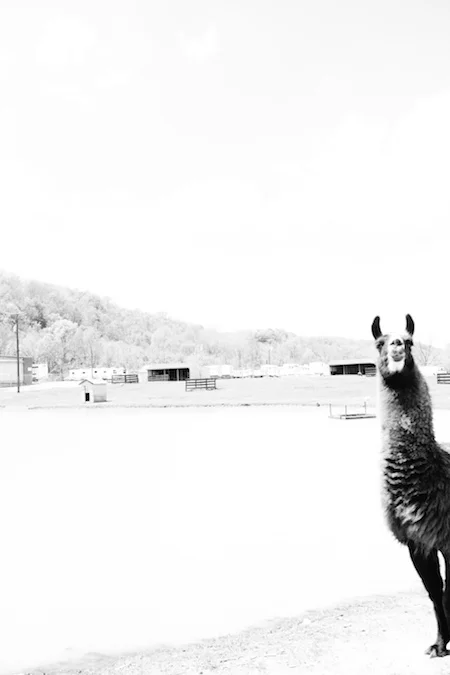We speak to Tammy Ruggles, a photographer who is legally blind
If there is one capability that is synonymous with photography, it is that of being able to see. But what happens should you begin to lose your vision, or if you decide that sight loss shouldn't be a barrier to practising the artistic discipline of your choice? With over two million people in the UK living with some form of sight loss, that's a huge pool of potential talent being left to stagnate. And it doesn't have to be left to waste. There are options and choices and ways and means. We spoke to Tammy Ruggles, a fine art photographer from Kentucky who happens to be legally blind, about her photography and how her sight loss has not prevented her from creating pictures.
Tammy, could you tell us a little about yourself, please? Who are you, where are you from, and what do you do?
I'm Tammy Ruggles. I was born in Kentucky, but spent kindergarten, first, and second grades in Cleveland, Ohio. After that, I was raised in Kentucky, living in both rural areas, and in small Kentucky cities like Morehead and Maysville.
I was born with a blinding disease known as retinitis pigmentosa (RP), a disorder that affects the retinas and causes sight loss as time goes by. I’m legally blind now, but wasn’t always. There was a time I could drive, read regular print, and see well enough to sketch. I earned two degrees so that I could practice social work, but lost my position when I became legally blind.
Tammy, by Jill Jarrett
After that, freelance writing became a part-time career. When I could no longer sketch, I discovered via a suggestion from a Facebook friend that I could finger paint. This was in 2013, which was the same year that I resumed photography, thanks to a point-and-shoot camera, a 47-inch computer monitor, and my remaining vision.
Although photography was an interest to me as a teenager and young adult, I couldn’t do it the way I wanted due to my visual impairment, as RP includes night blindness. I couldn’t see in a darkroom to develop photos, nor read the settings on a camera to shoot manually. I settled for taking family snapshots with a disposable camera. There is nothing wrong with that, and I liked doing that, but it wasn’t the creative, artistic kind of photography I wished I could do.
There are probably a few of our readers who aren't sure what the term 'legally blind' means. Would you mind explaining, please?
'Legally blind' is a medical and legal term that means you fit the term 'blind' technically, but may have some vision. Legal blindness can range from 20/200 up to 20/1000 and worse. Being legally blind differs from person to person, as everyone’s vision problem is different. Since I have RP, it’s my retinas that are affected, as well as my night vision, peripheral, colour vision, depth perception, and central vision.
How does RP affect your vision?
Everything looks very blurry to me. I can’t make out one family member from another unless they are very close to me, or I hear them speak. I can’t tell where the edges of steps, curbs, or ledges are, or read labels, road signs, and regular print.
How has your loss of vision had an impact on your life?
It’s had an impact on my life in certain ways, but in ways that I have to adjust to, as I’ve had this visual impairment my entire life. It means that I have to find new ways to keep doing the things I like, when possible. For example, when I could no longer sketch, I began to finger paint. Or when I couldn’t read regular print anymore, I had to use enlarged print.
When did you take up photography?
Although I’ve always liked photography, I didn’t do it seriously until the autumn of 2013, when I purchased my first point-and-shoot digital camera with auto settings.
What sort of photography do you enjoy the most?
I enjoy nature photography, as well as people. And to a lesser degree: abstract, animal, and still-life.
Side of the mountain
What's your photography philosophy?
It's about creating art with photography. I’ve been an artist of some sort since the age of 12, and have had four years of art classes in high school, with about three more in college. Photography is my way of creating art.
Are there any special requirements of your kit to enable you to take photos?
I practise photography a little bit differently to most photographers, but in similar ways as well. Where most photographers may spend time planning their shot or setting it up, gauging light, or adjusting settings, I keep my camera on auto, or sometimes on the black-and-white setting.
Instead of pre-visualising a scene, I just snap the shutter, and choose my images later, on my big monitor. This is where the artist in me gets to decide which ones to keep, and which ones to delete. I choose based on elements that include subject, contrast, composition, rhythm, balance, and abstraction.
Sunset
Since I see best in high contrast, black and white is my style. Besides that, black and white is classic photography, at least in my mind. In post-processing, I often enhance the contrast so that I can see it better, and I may enhance the saturation and contrast when working with colour too.
Is there anything that's surprisingly easy or difficult for you when it comes to taking photos?
Snapping the picture is easy, and choosing the ones to keep is easy. Knowing if there is enough clarity or definition for the viewer is a little tricky, but that’s something I can never know, so I don’t worry too much about that.
I don’t see my photos the way others do, and vice versa, so sometimes it’s a guessing game as to whether a photo is interesting or pretty. I worry knowing my photos aren’t perfect, and may have mistakes. I also wonder if viewers will like the picture. That’s the subjective nature of photography, though. Everyone doesn’t like the same thing.
Do you have any advice for anyone who might also be legally blind or partially sighted but would like to explore photography?
Yes, I say be open to the idea, and try photography with a camera that fits your individual needs. A point-and-shoot digital set on auto, a black-and-white setting, and my big screen, works for me. You won’t know if it works with your level of vision unless you try it. You can research online for different cameras to try.
Mountain
Once you have a camera and a way to view the photos you’ve taken, my next suggestion would be to do some sort of studying, either photography classes, art classes, design, or some self-studying to help you figure out what most people consider an interesting or artistic picture.
There are tons of resources online. One that I have to mention here is Ted Forbes’ The Art of Photography. He is not geared toward the visually impaired community per se, but I know his information has made me a better photographer. It doesn’t take long to learn, if you have the heart for photography and a desire to learn.
Finally, would you mind sharing some of your favourite photos with us?
This spring I went with my cousin on a photo adventure, and we went to a mini zoo on the outskirts of Maysville, Kentucky, which has been there for years. We decided to take some pictures of an ostrich and a llama that seemed to be best buddies. I named the llama Oscar and the ostrich Felix, from The Odd Couple, as they seemed to be a mismatched pair, but inseparable.
They walked right up to where we stood at the chain-link fence with our cameras. Llamas are known to spit right in your face, and I worried that the ostrich would peck our hands if we put our cameras against the fence that separated us, but we just had to get some shots of the odd couple. So we put our sunglasses on to protect our eyes, found a little hole in the chain-link fence to stick our lenses through, and took our chances.
We're grateful to Tammy for sharing her time and experiences and with us. If you would like to see more of her work, you can do so on DeviantArt.









